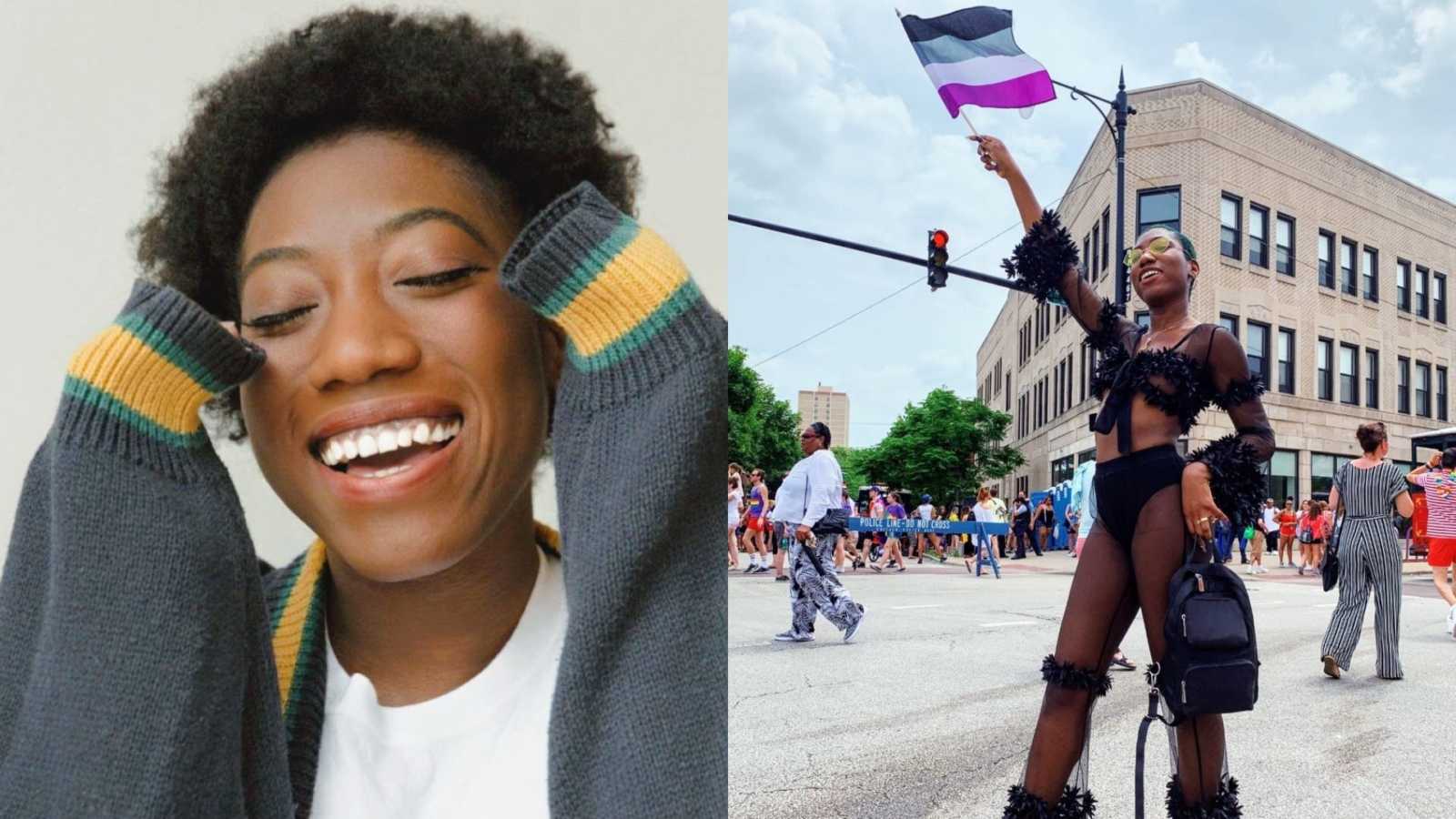“Growing up, I never had the opportunity to explore my identities in a way that made me feel valid. I was raised in a traditionally Nigerian household, around White Catholic neighbors, while also practicing Judaism. There was no room for me to express myself in any was aside from what I was exposed to on a regular basis. From my youth through high school, I went into a hypersexual phase – not always resulting in action, sometimes just having those thoughts be overactive, my desire for connection being the driving force. Several people around me were already exploring their sexuality, leading me to do the same while still struggling with the thought, ‘Is this how I’m suppose to be?’ crossing my mind on a regular basis.
As I moved up in high school, I started noticing a few of my friends were ‘coming out’ as gay or bi and it made me feel as though my disdain towards the explorations I had could be because I don’t fit in to heteronormative society. Since there wasn’t much education about queer culture, most of my information came from the LGBT+ communities I became a part of on Tumblr. While on there, I came across the term ‘Asexual’ and from there I kept digging. ‘I think, this fits me,’ is what I said to myself as I kept finding out more, and it’s something I held on to from there. For those who don’t know, being asexual means you do not find people sexually attractive. It doesn’t mean you don’t have a libido or don’t desire sex, it’s just my want for it doesn’t stem from my desire for the other person.
Around the time I hit senior year, I was invited to a birthday party with a bunch of other high school friends I knew. We were all the queer kids and it was a really comfortable space to be in; at the party, someone prompted each of us to go around and share how we identified. ‘Gay, Bi, Lesbian, etc.,’ then it came to me. ‘Asexual.’ ‘Oh, you’re the one who’s asexual!’ another friend said. I exclaimed, ‘Yup!’ and we continued; it was my first time saying it out loud and it felt really good to do and to be affirmed in my new identity.
From there, I continued down the rabbit hole of what asexuality was. After I left high school, I modeled and grew content in my self expression and started to align my identities with my art. It was a way for me to express myself and better understand my body without the sexual connection my peers were engaging in. Still, I looked through tumblr, AVEN (Asexuality Visibility Education Network), etc. and found a lot of things that resonated with me, while also still not feeling truly connected to the label. At this point, I was dating and continuing sexual explorations and the things I saw about asexuality really invalidated my experiences. For some time, it felt like I was trying to fit into a box that wasn’t meant for me. While I sat with this idea at the back of my mind, I tried getting more answers by asking more specific questions about asexuality. I finally came across the term ‘Demisexual’ (sexual attraction developing after an emotional bond has been formed) and I felt as though this fit me perfectly!

The only thing about this was, there was nobody in the community of asexuality who looked like me or really aligned with my own experiences in this identity. As Black women, we’re often hypersexualized and fetishized, as prepubescents, before we’ve even come into our own idea of who we want to be. Unfortunately, this has been normalized in our society, so as I became more comfortable in myself I had to advocate for myself and the representation I wanted to see. When I got into undergrad, I started joining clubs that were socially open and/or queer-centered, which had a major impact on my growth.
During this time, I was in my first long-term relationship, while also making more connections with different parts of the community, and I finally began to find my voice and start my advocacy revolving around the importance of representation in queer society. I joined and later became president of the Queer Alliance club at my school, bringing on a board who held marginalized sexual identities to bring more awareness and education to those sexualities.

While I was coming into truth, I came out to my then-partner, which was an eye-opening experience for me. When we started dating, I went through a phase of hypersexuality with him, which slowed down as more time passed in our relationship. When I came out to him, he started crying; I was floored! I didn’t understand at all and I started to wonder if it was a good idea. He then told me he started looking up, ‘Reasons why your partner stops having sex with you’ and found articles that told him the reason is because they no longer loved you! Could you imagine my shock when I heard this from him? He was crying because he was relieved his assumptions were incorrect, and I continued to reassure him my love for him was still just as strong as before. This really allowed me to understand the importance of communication in all my relationships; how can someone be aware of an unspoken issue?
This moment with him helped me understand awareness benefits everybody, so I continued finding ways to stay outspoken. While in undergrad, I became part of the planning committee for the 25-year of The Midwest Bisexual Lesbian Gay Transgender Asexual College Conference (MBLGTACC). In this role, I was able to connect with queer-identified youth from across the Midwest, where I created the first student panel for the conference and advocated for the change of the ‘A’ in the acronym from ‘Ally’ to ‘Asexual.’ I continued doing more work, involving my artistry and modeling to be more incorporated in my sexual identity.
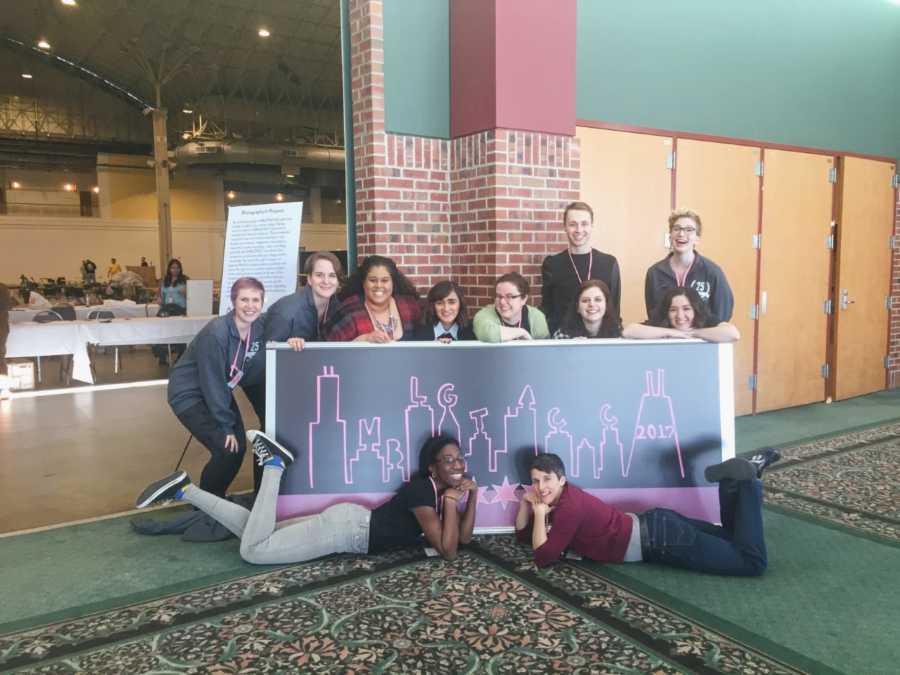
As I became more vocal & expressive, my commitment to finding more people and communities that would amplify the message of inclusivity grew. For about a year, I joined and co-hosted the podcast ‘Beyond Queer Stories;’ our mission was to feature a storyteller from the community every week to get to know them and hear about their experiences beyond sexual orientation and gender identity.
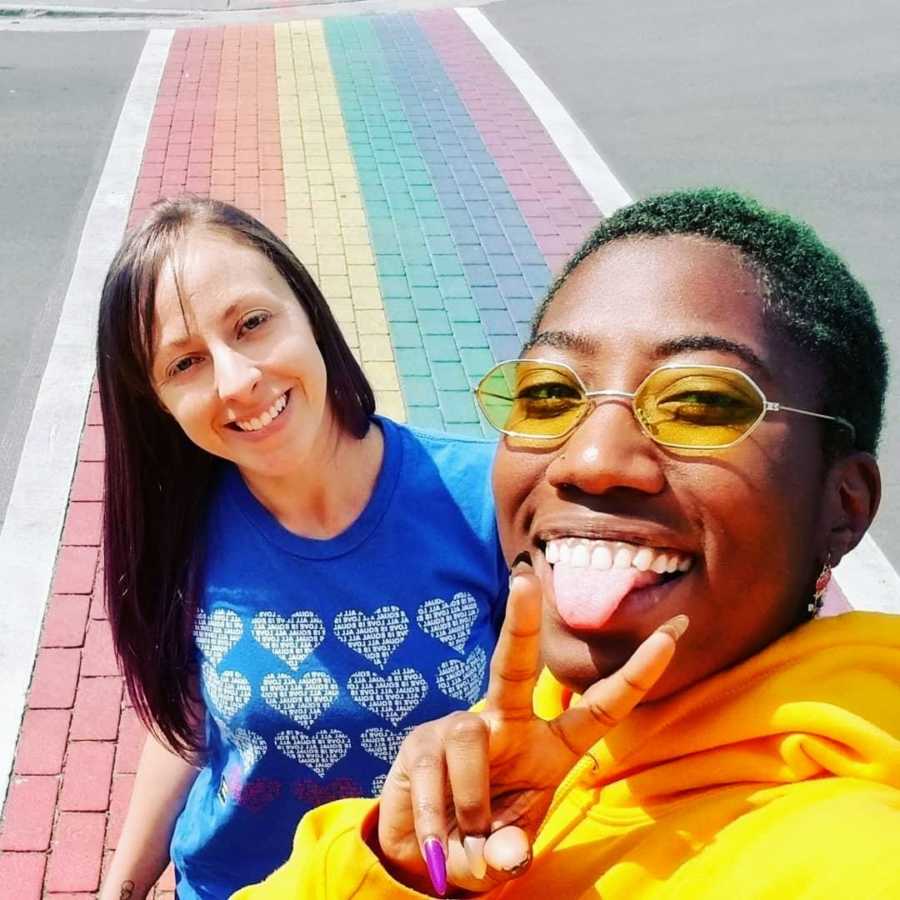
During this time, I also became part of a collective called ‘sexKiKi,’ which provided a safe space for Black queer femme & Trans/Gender Non Conforming (TGNC) folks to safely explore their sexuality without the exploitation of capitalistic colonialism. Being in this space, I was able to explore sex safely, with those who looked like me, from an asexual lens.
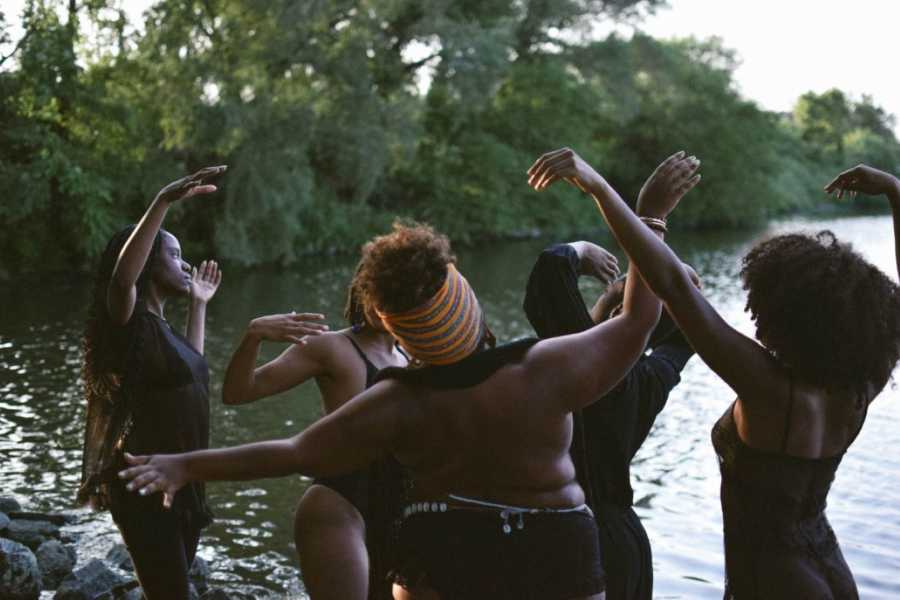
It was incredibly comforting to find people who were open minded to learning more and embracing identities like mine. As I made my connections, I continued meeting people who, still, did not understand how I could be Asexual and be ‘attractive.’ In their eyes, this was an oxymoron – it made no sense, and because of this, I must have been confused about my identity. Even after conversations, providing resources, providing what felt like years of emotional labor, I was met with comments from partners like, ‘Asexual people can’t have sex/don’t like sex/aren’t kinky, are you sure you are Ace? If we aren’t going to be together, I have no interest in learning more about your identity. I’m so attracted to you; Are you sure you’re asexual? If I can’t have sex with my partner, I’m not staying with them; I NEED that to feel loved; Why are you getting upset?’ being a few of the things I heard. It hurt a lot to hear those things from people who claim to love you, but I know those people’s insecurities don’t devalue me.
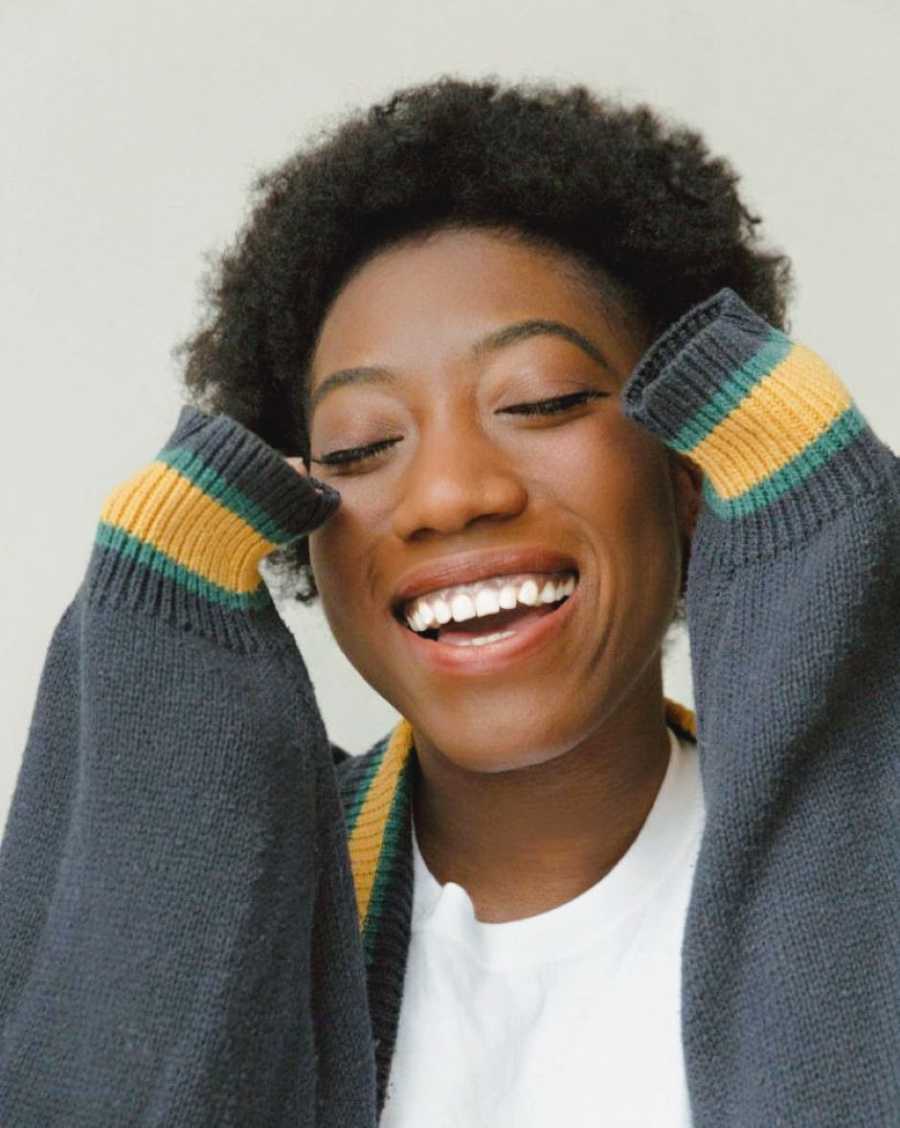
I was still driven to continue doing that work and in late 2019 that manifested itself into ‘Ace in Grace.’ During this time, I felt the need to continue to expand my outreach and build community around Black/POC Asexuals, so I created the collective ‘Ace in Grace,’ which is used to educate people about this community as well as uplift the voices marginalized within it. The name came from when I was marching in the 2019 Pride Parade. I’ve been invited to walk in Chicago Pride by a few friends since 2017 and it’s always a time for me to express myself, connect with others and be a visible Black Queer woman in a space which typically centers around white gay men.
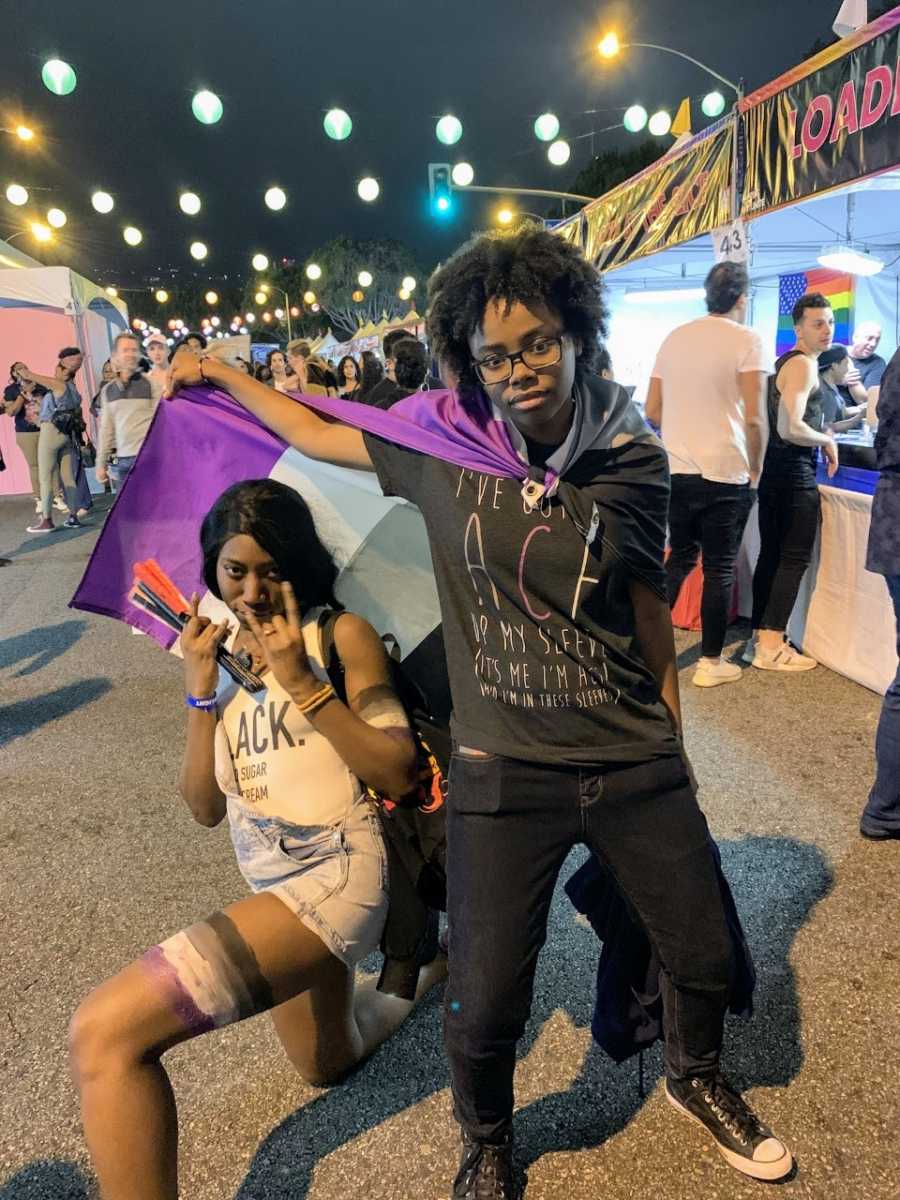
This time, I decided to go all out and dress in a way that not only makes me feel confident but also shows people Asexuals exist in an image that’s not usually seen or celebrated. It was an amazing time; for part of it we had to stop to reorder the procession and as I turned my head I saw a line of queer Black kids freaking out at me! They were gassing me up, and there was this one guy who saw my flag and said, ‘Ah! You’re Ace?!? You put the Ace in Grace!! Stunning!!’ and this is where the name comes from! It’s been a great way for me to educate people on this sexual identity and highlight those who look like me so representation is present for everyone.
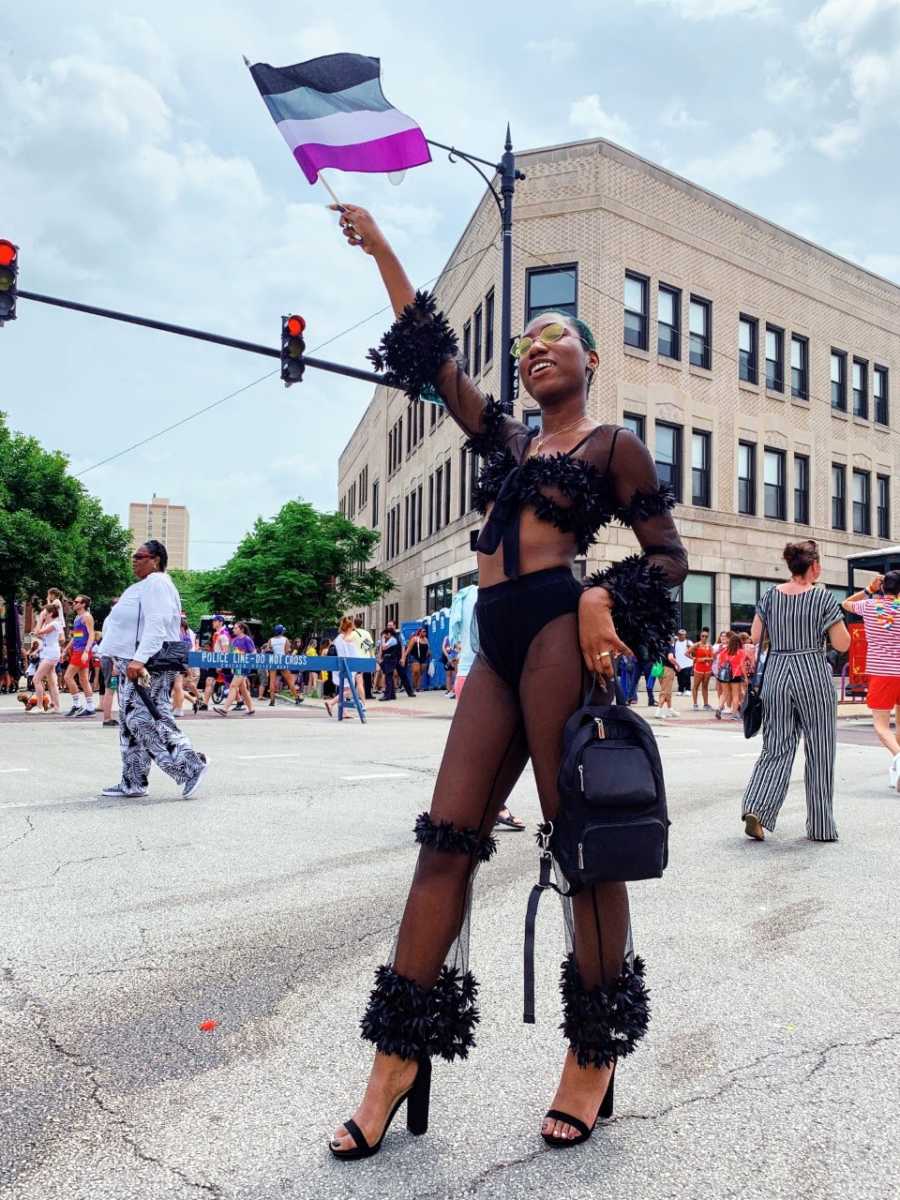
As a person who holds multiple marginalized identities, I grew up not relating to anyone and I see how that has shaped me today. So, being able to add more representation to the mix, while also continuing to learn and grow into myself, shows the depth of importance in long lasting education and awareness for those who are young and trying to find community. It’s important to note, asexuality is fluid and works on a spectrum; while I used to identify as Demisexual, I now identify mostly as Sensual Asexual, borderline Aromantic (no romantic attraction/desire for romantic relationships). And this can be stagnate throughout your whole life, or you can ebb and flow between these identities until you find one that fits how you’re feeling at the time!
Asexuals have been around for as long as this community has; it’s important to give folks like us the platform to share our stories so others can feel comfortable living through theirs. It’s also very important, as allies, to continue educating and validating us; we’re all living different lives and experience our asexuality differently. For us to feel seen, the negative stigma associated with Asexuals needs to disappear. There are Asexuals who are sex positive (neutral or adverse), kinky, poly, etc., and are all acceptable! So long as we’re here, living happy, healthy and safe lives, we deserve the space to exist without question. It’s up to others as well as those advocating to provide safe spaces for us to live authentically and I’m hopeful we’re going in this direction.”
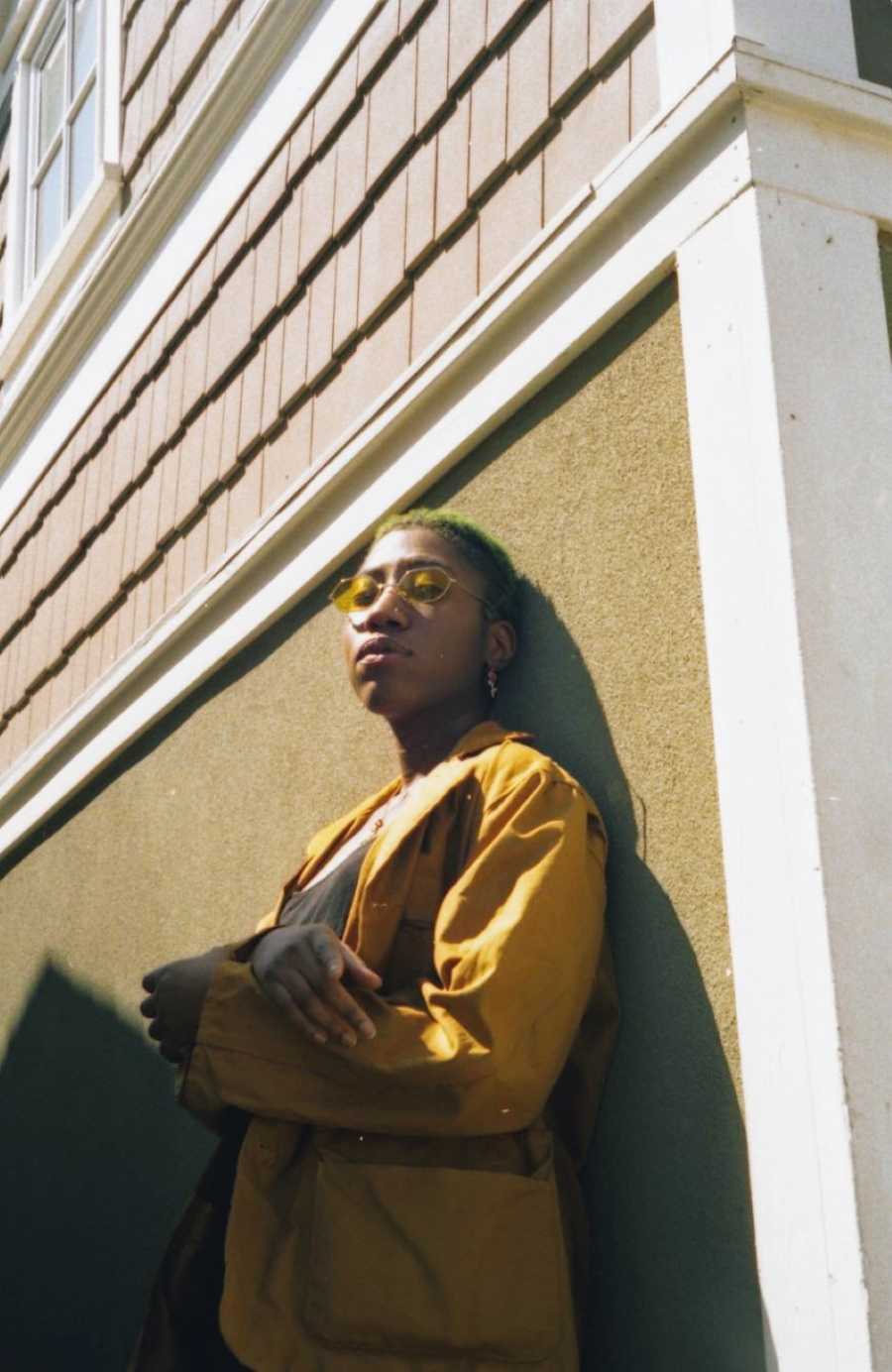
This story was submitted to Love What Matters by Ashabi Owagboriaye of Chicago, IL. You can follow their journey on Instagram, Ace in Grace, and website. Submit your own story here and be sure to subscribe to our free email newsletter for our best stories, and YouTube for our best videos.
Read more stories about Asexuality here:
Do you know someone who could benefit from this story? SHARE on Facebook to let them know a community of support is available.

